Fruit
Chocolate
Vanilla
Mixed
Others
Low-Fat
Non-Fat
Regular
Sugar-Free
Organic
Supermarkets
Online Retail
Convenience Stores
Specialty Stores
Food Service
Household
Food Service
Institutional
North America
Europe
South America
Asia Pacific
Middle East and Africa
North America Outlook (USD Billion, 2019-2035)
North America Frozen Yogurt Market by Flavor Type
Fruit
Chocolate
Vanilla
Mixed
Others
North America Frozen Yogurt Market by Formulation Type
Low-Fat
Non-Fat
Regular
Sugar-Free
Organic
North America Frozen Yogurt Market by Distribution Channel Type
Supermarkets
Online Retail
Convenience Stores
Specialty Stores
Food Service
North America Frozen Yogurt Market by End Use Type
Household
Food Service
Institutional
North America Frozen Yogurt Market by Regional Type
US
Canada
US Outlook (USD Billion, 2019-2035)
US Frozen Yogurt Market by Flavor Type
Fruit
Chocolate
Vanilla
Mixed
Others
US Frozen Yogurt Market by Formulation Type
Low-Fat
Non-Fat
Regular
Sugar-Free
Organic
US Frozen Yogurt Market by Distribution Channel Type
Supermarkets
Online Retail
Convenience Stores
Specialty Stores
Food Service
US Frozen Yogurt Market by End Use Type
Household
Food Service
Institutional
CANADA Outlook (USD Billion, 2019-2035)
CANADA Frozen Yogurt Market by Flavor Type
Fruit
Chocolate
Vanilla
Mixed
Others
CANADA Frozen Yogurt Market by Formulation Type
Low-Fat
Non-Fat
Regular
Sugar-Free
Organic
CANADA Frozen Yogurt Market by Distribution Channel Type
Supermarkets
Online Retail
Convenience Stores
Specialty Stores
Food Service
CANADA Frozen Yogurt Market by End Use Type
Household
Food Service
Institutional
Europe Outlook (USD Billion, 2019-2035)
Europe Frozen Yogurt Market by Flavor Type
Fruit
Chocolate
Vanilla
Mixed
Others
Europe Frozen Yogurt Market by Formulation Type
Low-Fat
Non-Fat
Regular
Sugar-Free
Organic
Europe Frozen Yogurt Market by Distribution Channel Type
Supermarkets
Online Retail
Convenience Stores
Specialty Stores
Food Service
Europe Frozen Yogurt Market by End Use Type
Household
Food Service
Institutional
Europe Frozen Yogurt Market by Regional Type
Germany
UK
France
Russia
Italy
Spain
Rest of Europe
GERMANY Outlook (USD Billion, 2019-2035)
GERMANY Frozen Yogurt Market by Flavor Type
Fruit
Chocolate
Vanilla
Mixed
Others
GERMANY Frozen Yogurt Market by Formulation Type
Low-Fat
Non-Fat
Regular
Sugar-Free
Organic
GERMANY Frozen Yogurt Market by Distribution Channel Type
Supermarkets
Online Retail
Convenience Stores
Specialty Stores
Food Service
GERMANY Frozen Yogurt Market by End Use Type
Household
Food Service
Institutional
UK Outlook (USD Billion, 2019-2035)
UK Frozen Yogurt Market by Flavor Type
Fruit
Chocolate
Vanilla
Mixed
Others
UK Frozen Yogurt Market by Formulation Type
Low-Fat
Non-Fat
Regular
Sugar-Free
Organic
UK Frozen Yogurt Market by Distribution Channel Type
Supermarkets
Online Retail
Convenience Stores
Specialty Stores
Food Service
UK Frozen Yogurt Market by End Use Type
Household
Food Service
Institutional
FRANCE Outlook (USD Billion, 2019-2035)
FRANCE Frozen Yogurt Market by Flavor Type
Fruit
Chocolate
Vanilla
Mixed
Others
FRANCE Frozen Yogurt Market by Formulation Type
Low-Fat
Non-Fat
Regular
Sugar-Free
Organic
FRANCE Frozen Yogurt Market by Distribution Channel Type
Supermarkets
Online Retail
Convenience Stores
Specialty Stores
Food Service
FRANCE Frozen Yogurt Market by End Use Type
Household
Food Service
Institutional
RUSSIA Outlook (USD Billion, 2019-2035)
RUSSIA Frozen Yogurt Market by Flavor Type
Fruit
Chocolate
Vanilla
Mixed
Others
RUSSIA Frozen Yogurt Market by Formulation Type
Low-Fat
Non-Fat
Regular
Sugar-Free
Organic
RUSSIA Frozen Yogurt Market by Distribution Channel Type
Supermarkets
Online Retail
Convenience Stores
Specialty Stores
Food Service
RUSSIA Frozen Yogurt Market by End Use Type
Household
Food Service
Institutional
ITALY Outlook (USD Billion, 2019-2035)
ITALY Frozen Yogurt Market by Flavor Type
Fruit
Chocolate
Vanilla
Mixed
Others
ITALY Frozen Yogurt Market by Formulation Type
Low-Fat
Non-Fat
Regular
Sugar-Free
Organic
ITALY Frozen Yogurt Market by Distribution Channel Type
Supermarkets
Online Retail
Convenience Stores
Specialty Stores
Food Service
ITALY Frozen Yogurt Market by End Use Type
Household
Food Service
Institutional
SPAIN Outlook (USD Billion, 2019-2035)
SPAIN Frozen Yogurt Market by Flavor Type
Fruit
Chocolate
Vanilla
Mixed
Others
SPAIN Frozen Yogurt Market by Formulation Type
Low-Fat
Non-Fat
Regular
Sugar-Free
Organic
SPAIN Frozen Yogurt Market by Distribution Channel Type
Supermarkets
Online Retail
Convenience Stores
Specialty Stores
Food Service
SPAIN Frozen Yogurt Market by End Use Type
Household
Food Service
Institutional
REST OF EUROPE Outlook (USD Billion, 2019-2035)
REST OF EUROPE Frozen Yogurt Market by Flavor Type
Fruit
Chocolate
Vanilla
Mixed
Others
REST OF EUROPE Frozen Yogurt Market by Formulation Type
Low-Fat
Non-Fat
Regular
Sugar-Free
Organic
REST OF EUROPE Frozen Yogurt Market by Distribution Channel Type
Supermarkets
Online Retail
Convenience Stores
Specialty Stores
Food Service
REST OF EUROPE Frozen Yogurt Market by End Use Type
Household
Food Service
Institutional
APAC Outlook (USD Billion, 2019-2035)
APAC Frozen Yogurt Market by Flavor Type
Fruit
Chocolate
Vanilla
Mixed
Others
APAC Frozen Yogurt Market by Formulation Type
Low-Fat
Non-Fat
Regular
Sugar-Free
Organic
APAC Frozen Yogurt Market by Distribution Channel Type
Supermarkets
Online Retail
Convenience Stores
Specialty Stores
Food Service
APAC Frozen Yogurt Market by End Use Type
Household
Food Service
Institutional
APAC Frozen Yogurt Market by Regional Type
China
India
Japan
South Korea
Malaysia
Thailand
Indonesia
Rest of APAC
CHINA Outlook (USD Billion, 2019-2035)
CHINA Frozen Yogurt Market by Flavor Type
Fruit
Chocolate
Vanilla
Mixed
Others
CHINA Frozen Yogurt Market by Formulation Type
Low-Fat
Non-Fat
Regular
Sugar-Free
Organic
CHINA Frozen Yogurt Market by Distribution Channel Type
Supermarkets
Online Retail
Convenience Stores
Specialty Stores
Food Service
CHINA Frozen Yogurt Market by End Use Type
Household
Food Service
Institutional
INDIA Outlook (USD Billion, 2019-2035)
INDIA Frozen Yogurt Market by Flavor Type
Fruit
Chocolate
Vanilla
Mixed
Others
INDIA Frozen Yogurt Market by Formulation Type
Low-Fat
Non-Fat
Regular
Sugar-Free
Organic
INDIA Frozen Yogurt Market by Distribution Channel Type
Supermarkets
Online Retail
Convenience Stores
Specialty Stores
Food Service
INDIA Frozen Yogurt Market by End Use Type
Household
Food Service
Institutional
JAPAN Outlook (USD Billion, 2019-2035)
JAPAN Frozen Yogurt Market by Flavor Type
Fruit
Chocolate
Vanilla
Mixed
Others
JAPAN Frozen Yogurt Market by Formulation Type
Low-Fat
Non-Fat
Regular
Sugar-Free
Organic
JAPAN Frozen Yogurt Market by Distribution Channel Type
Supermarkets
Online Retail
Convenience Stores
Specialty Stores
Food Service
JAPAN Frozen Yogurt Market by End Use Type
Household
Food Service
Institutional
SOUTH KOREA Outlook (USD Billion, 2019-2035)
SOUTH KOREA Frozen Yogurt Market by Flavor Type
Fruit
Chocolate
Vanilla
Mixed
Others
SOUTH KOREA Frozen Yogurt Market by Formulation Type
Low-Fat
Non-Fat
Regular
Sugar-Free
Organic
SOUTH KOREA Frozen Yogurt Market by Distribution Channel Type
Supermarkets
Online Retail
Convenience Stores
Specialty Stores
Food Service
SOUTH KOREA Frozen Yogurt Market by End Use Type
Household
Food Service
Institutional
MALAYSIA Outlook (USD Billion, 2019-2035)
MALAYSIA Frozen Yogurt Market by Flavor Type
Fruit
Chocolate
Vanilla
Mixed
Others
MALAYSIA Frozen Yogurt Market by Formulation Type
Low-Fat
Non-Fat
Regular
Sugar-Free
Organic
MALAYSIA Frozen Yogurt Market by Distribution Channel Type
Supermarkets
Online Retail
Convenience Stores
Specialty Stores
Food Service
MALAYSIA Frozen Yogurt Market by End Use Type
Household
Food Service
Institutional
THAILAND Outlook (USD Billion, 2019-2035)
THAILAND Frozen Yogurt Market by Flavor Type
Fruit
Chocolate
Vanilla
Mixed
Others
THAILAND Frozen Yogurt Market by Formulation Type
Low-Fat
Non-Fat
Regular
Sugar-Free
Organic
THAILAND Frozen Yogurt Market by Distribution Channel Type
Supermarkets
Online Retail
Convenience Stores
Specialty Stores
Food Service
THAILAND Frozen Yogurt Market by End Use Type
Household
Food Service
Institutional
INDONESIA Outlook (USD Billion, 2019-2035)
INDONESIA Frozen Yogurt Market by Flavor Type
Fruit
Chocolate
Vanilla
Mixed
Others
INDONESIA Frozen Yogurt Market by Formulation Type
Low-Fat
Non-Fat
Regular
Sugar-Free
Organic
INDONESIA Frozen Yogurt Market by Distribution Channel Type
Supermarkets
Online Retail
Convenience Stores
Specialty Stores
Food Service
INDONESIA Frozen Yogurt Market by End Use Type
Household
Food Service
Institutional
REST OF APAC Outlook (USD Billion, 2019-2035)
REST OF APAC Frozen Yogurt Market by Flavor Type
Fruit
Chocolate
Vanilla
Mixed
Others
REST OF APAC Frozen Yogurt Market by Formulation Type
Low-Fat
Non-Fat
Regular
Sugar-Free
Organic
REST OF APAC Frozen Yogurt Market by Distribution Channel Type
Supermarkets
Online Retail
Convenience Stores
Specialty Stores
Food Service
REST OF APAC Frozen Yogurt Market by End Use Type
Household
Food Service
Institutional
South America Outlook (USD Billion, 2019-2035)
South America Frozen Yogurt Market by Flavor Type
Fruit
Chocolate
Vanilla
Mixed
Others
South America Frozen Yogurt Market by Formulation Type
Low-Fat
Non-Fat
Regular
Sugar-Free
Organic
South America Frozen Yogurt Market by Distribution Channel Type
Supermarkets
Online Retail
Convenience Stores
Specialty Stores
Food Service
South America Frozen Yogurt Market by End Use Type
Household
Food Service
Institutional
South America Frozen Yogurt Market by Regional Type
Brazil
Mexico
Argentina
Rest of South America
BRAZIL Outlook (USD Billion, 2019-2035)
BRAZIL Frozen Yogurt Market by Flavor Type
Fruit
Chocolate
Vanilla
Mixed
Others
BRAZIL Frozen Yogurt Market by Formulation Type
Low-Fat
Non-Fat
Regular
Sugar-Free
Organic
BRAZIL Frozen Yogurt Market by Distribution Channel Type
Supermarkets
Online Retail
Convenience Stores
Specialty Stores
Food Service
BRAZIL Frozen Yogurt Market by End Use Type
Household
Food Service
Institutional
MEXICO Outlook (USD Billion, 2019-2035)
MEXICO Frozen Yogurt Market by Flavor Type
Fruit
Chocolate
Vanilla
Mixed
Others
MEXICO Frozen Yogurt Market by Formulation Type
Low-Fat
Non-Fat
Regular
Sugar-Free
Organic
MEXICO Frozen Yogurt Market by Distribution Channel Type
Supermarkets
Online Retail
Convenience Stores
Specialty Stores
Food Service
MEXICO Frozen Yogurt Market by End Use Type
Household
Food Service
Institutional
ARGENTINA Outlook (USD Billion, 2019-2035)
ARGENTINA Frozen Yogurt Market by Flavor Type
Fruit
Chocolate
Vanilla
Mixed
Others
ARGENTINA Frozen Yogurt Market by Formulation Type
Low-Fat
Non-Fat
Regular
Sugar-Free
Organic
ARGENTINA Frozen Yogurt Market by Distribution Channel Type
Supermarkets
Online Retail
Convenience Stores
Specialty Stores
Food Service
ARGENTINA Frozen Yogurt Market by End Use Type
Household
Food Service
Institutional
REST OF SOUTH AMERICA Outlook (USD Billion, 2019-2035)
REST OF SOUTH AMERICA Frozen Yogurt Market by Flavor Type
Fruit
Chocolate
Vanilla
Mixed
Others
REST OF SOUTH AMERICA Frozen Yogurt Market by Formulation Type
Low-Fat
Non-Fat
Regular
Sugar-Free
Organic
REST OF SOUTH AMERICA Frozen Yogurt Market by Distribution Channel Type
Supermarkets
Online Retail
Convenience Stores
Specialty Stores
Food Service
REST OF SOUTH AMERICA Frozen Yogurt Market by End Use Type
Household
Food Service
Institutional
MEA Outlook (USD Billion, 2019-2035)
MEA Frozen Yogurt Market by Flavor Type
Fruit
Chocolate
Vanilla
Mixed
Others
MEA Frozen Yogurt Market by Formulation Type
Low-Fat
Non-Fat
Regular
Sugar-Free
Organic
MEA Frozen Yogurt Market by Distribution Channel Type
Supermarkets
Online Retail
Convenience Stores
Specialty Stores
Food Service
MEA Frozen Yogurt Market by End Use Type
Household
Food Service
Institutional
MEA Frozen Yogurt Market by Regional Type
GCC Countries
South Africa
Rest of MEA
GCC COUNTRIES Outlook (USD Billion, 2019-2035)
GCC COUNTRIES Frozen Yogurt Market by Flavor Type
Fruit
Chocolate
Vanilla
Mixed
Others
GCC COUNTRIES Frozen Yogurt Market by Formulation Type
Low-Fat
Non-Fat
Regular
Sugar-Free
Organic
GCC COUNTRIES Frozen Yogurt Market by Distribution Channel Type
Supermarkets
Online Retail
Convenience Stores
Specialty Stores
Food Service
GCC COUNTRIES Frozen Yogurt Market by End Use Type
Household
Food Service
Institutional
SOUTH AFRICA Outlook (USD Billion, 2019-2035)
SOUTH AFRICA Frozen Yogurt Market by Flavor Type
Fruit
Chocolate
Vanilla
Mixed
Others
SOUTH AFRICA Frozen Yogurt Market by Formulation Type
Low-Fat
Non-Fat
Regular
Sugar-Free
Organic
SOUTH AFRICA Frozen Yogurt Market by Distribution Channel Type
Supermarkets
Online Retail
Convenience Stores
Specialty Stores
Food Service
SOUTH AFRICA Frozen Yogurt Market by End Use Type
Household
Food Service
Institutional
REST OF MEA Outlook (USD Billion, 2019-2035)
REST OF MEA Frozen Yogurt Market by Flavor Type
Fruit
Chocolate
Vanilla
Mixed
Others
REST OF MEA Frozen Yogurt Market by Formulation Type
Low-Fat
Non-Fat
Regular
Sugar-Free
Organic
REST OF MEA Frozen Yogurt Market by Distribution Channel Type
Supermarkets
Online Retail
Convenience Stores
Specialty Stores
Food Service
REST OF MEA Frozen Yogurt Market by End Use Type
Household
Food Service
Institutional


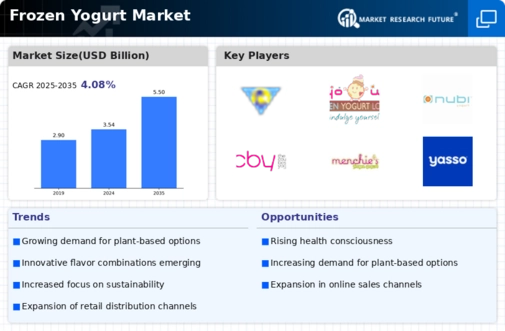
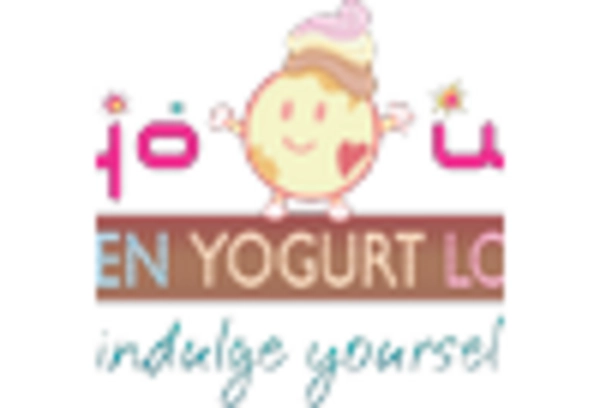

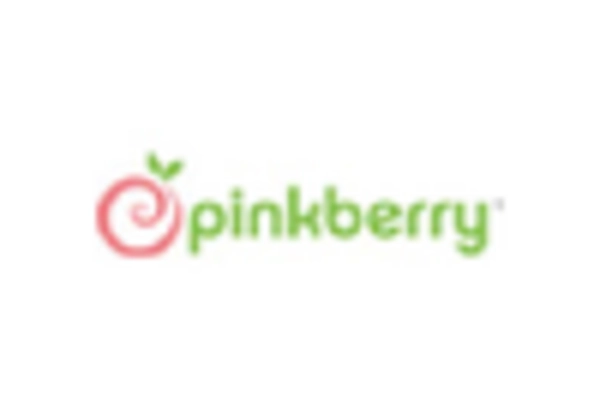
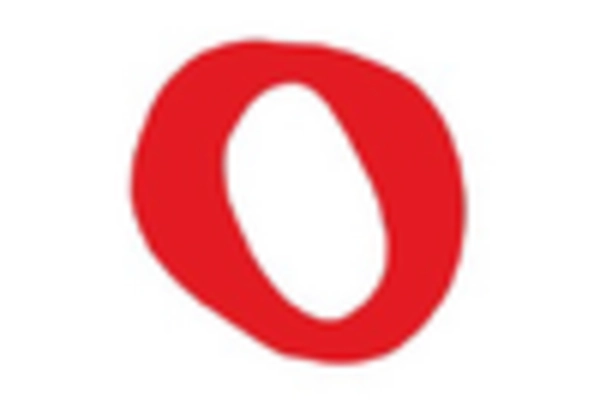
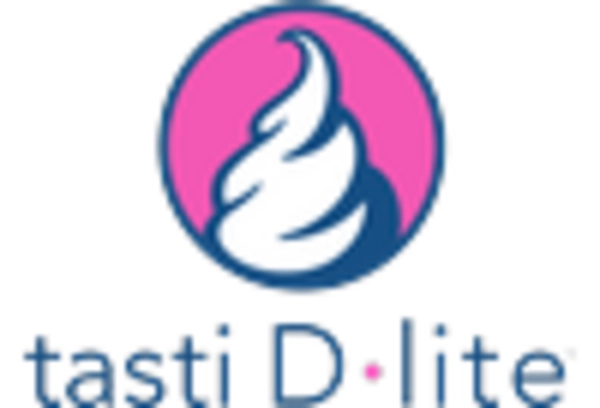
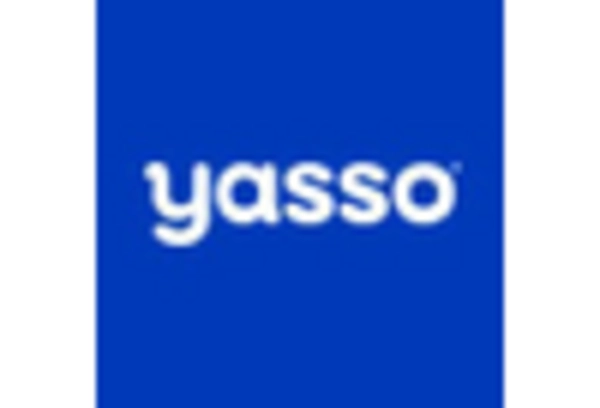









Leave a Comment